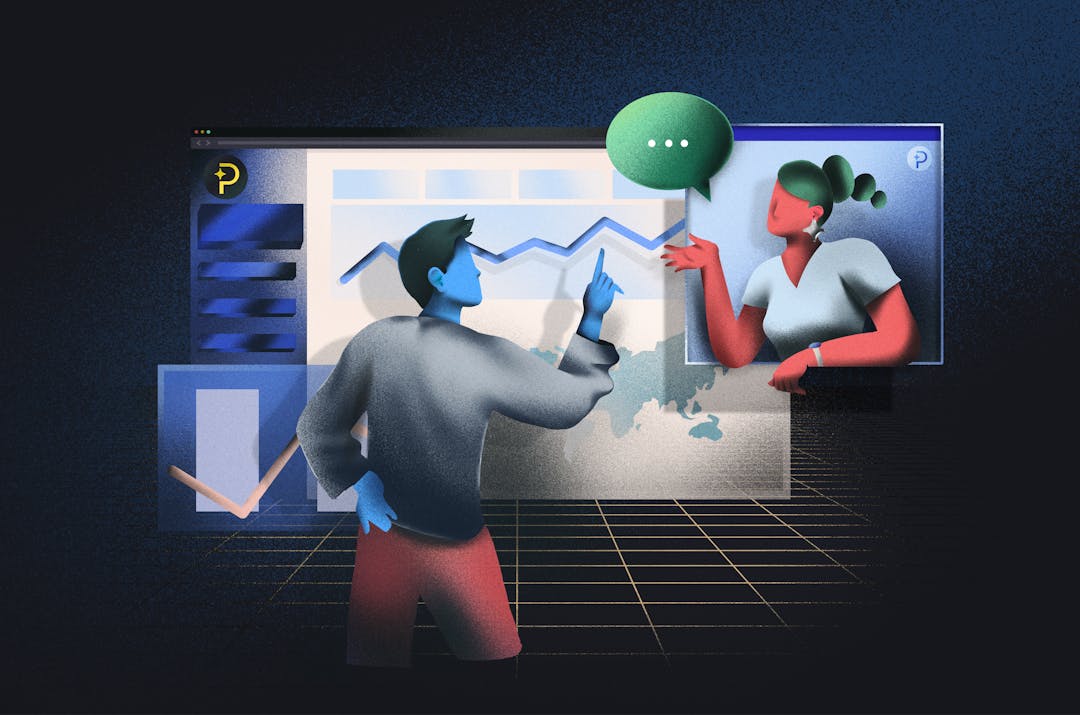Learn what customer analysis is, what the benefits are to investing in it, and how to perform it the right way.
Understanding your customers and potential customers is a key aspect of being able to effectively market to them and build relationships with them. Careful customer analysis will provide you with the tools to convert more customers and keep them from churning for longer periods of time. In this post, we'll take a look at what customer analysis is, its benefits, and how to get started with it.

What is customer analysis?
Customer analysis is a combination of qualitative and quantitative research collected on your customers with the purpose of better understanding them in order to draw meaningful conclusions that will aid you in your marketing and outreach efforts. It allows you to determine the needs of your customers, the types of messaging they respond well to, and why they are or aren't purchasing your product. Armed with this information, you can make the changes necessary to increase growth.
Two types of customer profiles you need to create
There are two different ways of looking at customers. Each of these will provide crucial insights into how to best target your messaging and guide future product decisions.
Customer behavioral profile
Creating a customer behavioral profile consists of two parts. The first part is understanding their buying criteria. Using market research and analytics, you can determine which features are most appreciated by customers, which needs are being underserved, and what price points they're willing to pay. Once you understand your customers' needs and willingness to pay, you can better tailor your product around those needs and price points. If you already have the features they value most, you can put additional effort into highlighting them in your marketing materials.
The second part of the behavioral profile is the purchasing patterns of your customers. What are they buying, and how frequently are they buying it? Which sales channels are they using to make a purchase, and where did they arrive from? What is the average time between first visit and first purchase? How long do they stay around before churning? All of these questions can inform your marketing decisions and allow for fine-grained tuning of your messaging and sales strategy.
Customer demographic profile
Demographic information such as age, location, income and education levels, gender, and more can give you a clearer picture of the type of messaging that will most resonate with customers and the marketing channels that can best reach them. The best way to determine which demographics to target for future marketing efforts is by looking at your existing customers. Building a marketing strategy around the types of people who are already purchasing is a great way to maximize the ROI of your marketing budget.
5 key benefits of performing customer analysis for any business
We've already touched lightly on some of the reasons that you should be doing customer analysis. Now let's take a closer look at some of the key benefits to show you just how important customer analysis can be to the sustained growth of your business.
1. Reduced churn & increased customer retention
One of the biggest reasons customers churn is because the product isn't fulfilling their needs. Customer analysis allows you to better understand what those needs are and tailor your product, your training materials, and your messaging to better address those needs before the customer churns.
2. Smarter product improvements
Knowing customer needs is a good way to decide what new features and improvements you should make to your product. By examining customer behavior to see which features are used and which are not, you'll have a better idea of what category of features customers find most useful, and which areas may need some improvement to increase usage.
3. Personalized and targeted marketing strategy
The most successful marketing departments create buyer personas for their customers. These are fictional characters that represent the various segments of customers that are most likely to purchase your product. The personas give you a more accurate target when determining what the tone of your messaging should be. You can also use analytics to target, in specific ways, customers who exhibit a certain behavior. This two-pronged personalization strategy results in a much more efficient marketing process.
4. Increased sales and revenue
When you're using buyer personas to communicate more effectively to potential customers, and using the other customer analysis you've performed, to more accurately address their pain points in both your messaging and your product development, you'll end up converting a higher number of potential customers into paying customers for increased revenue.
5. Lower CAC
Increased revenue alone isn't always a good thing. If you end up spending more to get that revenue, you're moving downward in profitability. Customer analysis allows you to make every aspect of the customer journey more efficient, meaning you'll be able to close more sales and keep customers around longer without spending more on marketing or other customer acquisition strategies.
How to do customer analysis in 8 steps
If your customer analysis is going to be effective, then it needs to be thorough. It's important that you gather the proper information and then apply it in the most meaningful way. The process can be outlined in eight broad steps:
1. Analyze your current customers
If you have a good analytics system in place, then you've already have a lot of data on how your customers behave. While market research looking outside of your customer base can help, looking at the people who have already purchased accomplishes the dual purpose of giving you specific access to how your product is used and providing you with information on the exact type of people likely to purchase from you.
2. Perform customer profitability analysis to identify the most valuable customers
Your entire customer base can give you plenty of good insights about which features are popular and similar generic metrics. But in order to know which types of customers to reach out to and which improvements are going to make the biggest impact on churn reduction, it pays to look at the type of people who have spent the most and/or stayed with you the longest. Keeping those customers happy and bringing in more like them will give you the most growth.
3. Perform customer needs analysis to discover the main purchase drivers
People make purchases based on needs. When you understand what your customers (and people similar to them) need from a product, you'll also understand what drives them to make a purchase. This data will play a big role in shaping the future development of your product and help you stay a step ahead of the competition.
4. Perform customer segmentation analysis to create customer segments
Customers can be segmented in a variety of ways. You can divide them by common demographic traits, common profitability metrics, common shopping or app-usage behaviors, and more. The data itself and customer segmentation tools will help guide you by grouping your customers into logical segmentation buckets. The data will help you determine your most profitable customers for the step above, but also show you which are in danger of churning, so you can take steps to avoid it.
5. Use customer data to create buyer personas
Armed with the customer segmentation data, the next step is to get to work crafting a fictional version of the major segments. These buyer personas will serve as the fictional embodiment of your customers, so the marketing, sales, and onboarding teams can communicate with them in a way they'll be most responsive to.
6. Acquire customer feedback
Analytics are a big driver of how you understand your customers, but they alone can't tell you everything. The best way to know what customers think is still the old-fashioned way of asking them. Getting routine customer feedback will keep you stay up-to-date on how customers feel about your product versus an ever-changing technological and competitive landscape.
7. Draw a customer journey map
Drawing a map of your current customer journey and comparing it with the feedback they've given and data you collected can help you identify points in the journey that are not currently being adequately addressed.
8. Repeat
The technological landscape is constantly changing. What was state-of-the-art and adored by customers one day can be old news the next. It's important to keep that in mind and ensure that customer analysis is an ongoing effort on your part, and not something you do once and forget about.
Customer analysis FAQs
What should a customer analysis include?
When conducting a customer analysis, you should gather data about how customers are interacting with your product, what their pain points and needs are, what demographic and purchasing groups they belong to, and feedback directly from them about their feelings on your product.
How does customer data analysis help in the decision-making process?
Customer data analysis helps you to better understand what your customer's needs are and what features they interact with the most, to help guide you make accurate decisions for future product development. It also paints an accurate picture of who your customer is, allowing you to make more-informed decisions regarding ad-targeting and the tone of your ad copy and website text.
What are the types of customer analysis?
The two major types of customer analysis are behavioral analysis and demographic analysis. Behavioral analysis can be further divided into two subgroups: buying criteria and purchasing patterns.




